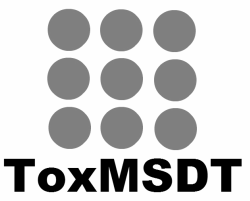Section 6: Key Points
What We've Covered
This section made the following main points:
What We've Covered
This section made the following main points:
- A hazard is the capability of a substance to cause an adverse effect.
A risk is the probability that the hazard will occur under specific conditions. - Risk assessment is the process of determining hazard, exposure, and risk.
Risk management is the process of weighing policy alternatives and deciding on the most appropriate regulatory action. - There are four basic steps to risk assessment:
- Hazard Identification
- Identify or develop information suggesting or confirming whether a chemical poses a potential hazard to humans.
- (Quantitative) Structure Activity, or (Q)SAR methods, including computer models, help consider closely related chemicals as a group or category.
- Read-across involves estimating what a chemical may be like, including the presence or absence of certain properties or activities, based on one or more other chemicals.
- Adverse Outcome Pathways (AOPs) involve in vitro methods that evaluate changes in normal cellular signaling pathways.
- Other emerging methods include (Quantitative) in vitro to in vivo extrapolation, or (Q)IVIVE, Integrated Testing Strategies, and Integrated Approaches to Testing and Assessment (IATA).
- Dose-Response Assessment
- Carcinogenic (cancer) risk assessment involves two steps:
- Perform qualitative evaluation of all epidemiology studies, animal bioassay data, and biological activity.
- Quantitation of the risk for substances classified as definite or probably human carcinogens.
- Non-carcinogenic risk assessment includes:
- Acceptable Daily Intake (ADI), which divides the NOAEL by uncertainty/safety factors.
- Reference Dose (RfD), which divides the NOAEL or LOAEL by uncertainty/safety factors.
- Benchmark Dose Method (BMD), which extrapolates data to determine a point of departure (POD) that accounts for study quality.
- Assessments for noncancer toxicity effects, acute or short-term exposures, and occupational exposures.
- Carcinogenic (cancer) risk assessment involves two steps:
- Exposure Assessment
- People are exposed to mixtures of hundreds of chemicals in everyday life.
- An exposure pathway describes the:
- Route a substance takes from its source to its endpoint.
- How people can be exposed to the substance.
- The three steps of exposure assessment are to:
- Characterize the point of exposure setting and exposure scenario.
- Identify exposure pathways.
- Quantify the exposure.
- Exposure models are commonly used because actual exposure measurements are often not available.
- Risk Characterization
- This final phase predicts the frequency and severity of effects in exposed populations.
- Biological and statistical uncertainties are described.
- For carcinogenic risks, the probability of a person developing cancer over a lifetime is estimated by multiplying the cancer slope factor for the substance by the chronic, 70-year average daily intake.
- For noncarcinogenic effects, the exposure level is compared with an ADI, RfD, or MRL derived for similar exposure periods.
- Hazard Identification

